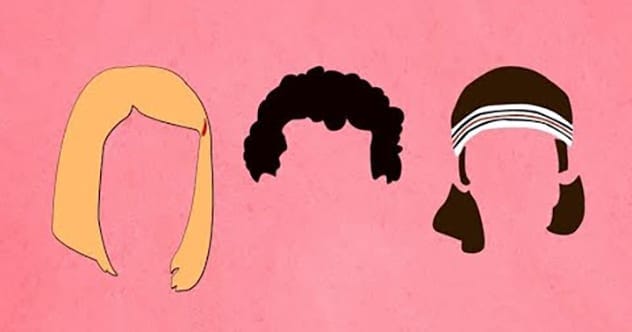Wes Anderson’s love for movies started early. He’d get his brothers involved, making short films with his dad’s Super 8 camera. Even when his parents divorced and his grades slipped, he dove deeper into his passion. He worked part-time as a projectionist to pay for film school, eventually graduating from the University of Texas with a philosophy degree. There, he met Owen Wilson, who gave him direction. Together, they wrote their first movie, Bottle Rocket. Despite a lukewarm reception, Anderson’s charming stories and unique visuals soon found their audience.
The Texas-born director has gone from strength to strength, creating films that have found both success and critical acclaim. His movies have brought in over $500 million at the box office and earned many awards. With the upcoming premiere of his tenth film, The French Dispatch, let’s look at some behind-the-scenes facts about Wes Anderson movies.
If you’re a fan of Listverse and enjoy quirkiness, you’ll likely appreciate Wes Anderson’s movies. You might even want to check out the Accidentally Wes Anderson Instagram account, which features real-world places that look straight out of a Wes Anderson film.
10. Isle of Dogs Needed 22,000 Freckles
Isle of Dogs took two years to film. Hundreds of crew members helped bring the stop-motion film to life, including 60 puppet makers. Every item was handmade, with incredible attention to detail, even down to the china patterns on dinner plates. Each puppet was built around a metal frame, allowing animators to create subtle movements, frame by frame.
Character expressions were also highly customizable. Faces had slots that allowed animators to quickly switch out mouths. This way, the team could simulate different speech patterns by simply replacing the entire mouth. Main characters also needed replacement heads, adding more work for the team. Take Tracy Walker, the foreign exchange student. Each of her 297 freckles was painted on each version of her face, one by one, to ensure consistency. Angela Kiely, head of the film’s painting department, applied about 22,000 freckles during the project, using a tiny paintbrush. Millions of hairs were individually punched into the puppets, both human and canine. By the end, the team had created over 3,000 puppets.
One of the film’s most complex scenes involved a sushi chef preparing a poisoned meal. The continuous shot shows the chef’s hands stripping bones from a dead fish, chopping a crab, and preparing an octopus tentacle. This one minute of stop-motion action caused issues for animators. As puppet wizard Andy Gent put it, “Putting gloves on in stop-motion animation is incredibly difficult. I think it took three animators, because it broke quite a few people to get it through the shot. Seven months later, we end up with one minute of animation.”
9. The Tenenbaums Cast Protected Wes Anderson from Gene Hackman
The Royal Tenenbaums took inspiration from real relationships, including Wes Anderson’s parents’ divorce. Royal Tenenbaum, the family’s patriarch, was based on how Gene Hackman thought he raised his kids. Because of the personal nature of this performance, the actor even asked his family for permission before taking the role. Unfortunately for Wes Anderson, they agreed.
Hackman often clashed with the director, even walking out of the role at one point. About a third of the way through filming, he announced his retirement from acting. Anjelica Huston and Gwyneth Paltrow, both terrified of Hackman, felt they needed to defend Anderson. Huston recalled one of Hackman’s comments: “Pull your pants up and act like a man.” On another occasion, he called him a “c–t.”
Anderson noticed that Bill Murray wasn’t afraid to stand up to Hackman, so he asked the Ghostbusters star to hang around, even on his days off. Murray joked, “The word cocksucker gets thrown around a lot. I’m gonna take that word and throw it out of this room, because it doesn’t belong here. I heard these stories, like, ‘Gene threatened to kill me today.’ Kill you? You’re in the union. He can’t kill you.”
8. Actors Suffered for their Art on The Grand Budapest Hotel
The Grand Budapest Hotel is Wes Anderson’s highest-grossing film, bringing in $170 million at the box office. The comedy follows the adventures of concierge Gustave (Ralph Fiennes) and his young bellhop Zero (Tony Revolori). Gustave is falsely accused of murdering Madame D., a wealthy widow. Once imprisoned, Gustave and his inmates hatch an escape plan. During one scene, they hop over sleeping guards. When Anderson showed the cast how he wanted it done, he accidentally kicked an actor in the face, dislodging a fake tooth. The actor swallowed it.
The escapees meet up with Zero in a dimly lit supply depot. A prisoner, Ludwig (Harvey Keitel), slaps Zero in the face, saying, “Good luck, kid.” Anderson, Keitel, and Fiennes planned the scene without telling Revolori. Revolori was unaware that Keitel had been told to slap him. “Wes kept saying, ‘Let’s do one more [shot], just for the pleasure of it,’” Revolori said. “And every time Harvey would do 10 push-ups to pump himself up. I was ready to die.” The scene took 42 takes.
7. Fantastic Mr. Fox Created Behind-the-Scenes Friction
Production on Fantastic Mr. Fox began in 2004, marking Wes Anderson’s first venture into stop-motion animation. The crew built 120 sets, 535 puppets, and thousands of objects. An average day’s work yielded just 30 seconds of footage. Many effects were later used for Isle of Dogs, from cotton wool smoke plumes to plastic wrap water.
Anderson aimed for an authentic experience. With screenwriter Noah Baumbach, he stayed at Roald Dahl’s estate, Gipsey House, to refine the story. He spent time photographing Dahl’s possessions, which the animation team recreated. Mr. Fox’s office was inspired by Dahl’s Writing Hut. Inspiration for Mr. Fox’s home came from the book’s cover. Dahl’s wife, Felicity, said the real tree was near Gipsey House.
Anderson directed much of the film from his apartment in Paris, sending emails outlining scenes. The production team livestreamed sets to his apartment for his input. In 2009, the film’s photography lead seemed critical of Anderson’s approach. “I think he’s a little sociopathic. I think he’s a little O.C.D. Contact with people disturbs him. This way, he can spend an entire day locked inside an empty room with a computer.” This comment created a rift with Anderson.
6. Bill Murray Didn’t want a Salary for Rushmore
Bill Murray is a staple of Wes Anderson’s films, appearing in all but one. Their relationship started in 1997 when Murray joined Rushmore. He loved the script so much that he agreed to work for free. Due to Screen Actors Guild rules, he had to accept a $9,000 salary.
Anderson was in awe of Murray, initially whispering instructions out of fear of being humiliated. To build Anderson’s confidence, Murray publicly sought his input. The film was supposed to have a helicopter shot, but the studio wanted to cut it to save money. Murray wrote Anderson a blank check to cover the cost. The scene was abandoned, and Anderson kept Murray’s check as a memento.
5. The Life Aquatic Crew Built a 150-Foot Cutaway of a Ship
“Let me tell you about my boat,” says Steve Zissou (Bill Murray) in The Life Aquatic. Behind him is a cross-section of a 150-foot ship, the Belafonte. From bow to stern, every part of the ship is detailed. There’s a sauna, lab, engine room, observation deck, bridge, radar equipment, and a mini-sub. This moment required a huge effort.
Beforehand, Wes Anderson met with production designer Mark Friedberg. They brainstormed ideas for the Belafonte cutaway. Friedberg suggested building part of the ship and painting the rest. Anderson wasn’t enthusiastic. Friedberg suggested building half the ship. Anderson’s expression didn’t change. Then Friedberg realized what Anderson wanted. “[I asked] ‘you’d never make the whole thing, would you?’ Wes started smiling, and his producer stopped smiling.”
The crew built the entire boat on a soundstage in Rome. It took a year, all for one shot. The finished product was so big that it wouldn’t fit in frame. Cinematographer Robert Yeoman said, “I called Panavision in a panic and asked, ‘Do you have any wider lenses? Send them immediately!’” Even with new lenses, they filmed through a doorway.
4. The Darjeeling Limited was a Technical Nightmare
Much of Wes Anderson’s Darjeeling Limited takes place on a train in India, presenting challenges. The crew negotiated with Indian authorities for a working train (and ten carriages) for a journey across India.
Friedberg returned to design the train’s interior, mixing Indian décor with the Orient Express aesthetic. Local artisans decorated the carriage hallways, painting elephants and lining windows with Indian fabrics. Friedberg and Anderson retrofitted the carriages with film lights and camera fixtures.
Filming on a moving set was a major hurdle. Anderson filmed on tracks used by other trains, so the schedule had to accommodate commuter trains. Delays often stopped filming. Producer Lydia Dean Pilcher said, “[Wes] wanted to move fast and even if we got stuck waiting for a train to pass we would get out a long piece of lumber and start rocking the train to keep the work going. The idea was that, no matter what the logistics, we would never stop shooting, ever.”
3. Bottle Rocket Prompted Walkouts
Bottle Rocket was Wes Anderson’s first film about two buddies, Dignan and Anthony, who try to pull off low-level heists, dubbed the 75-year plan. The story was originally a short in 1991, acclaimed at Sundance. Wes Anderson and Owen Wilson wrote the script.
Director James L. Brooks met with them and they performed a reading of their 120-page screenplay. “We knew something was wrong two hours into it when we were only on page 40,” Wilson recalled. Brooks flew Anderson and Wilson to Hollywood to refine the script. Wilson discovered they were staying below a plastic surgery clinic. The story grew to include a crime lord, Mr. Henry (James Caan). But when screened, things went badly.
The screening was for 400 moviegoers in Santa Monica. Anderson said, “I was sitting in the back row with all the studio executives, and I began to see people leaving… they were leaving in groups. People don’t go to the bathroom in groups. They’re not coming back.” There were 85 walkouts. Columbia Pictures released it in few theaters, barely recouping a fraction of its $7 million budget. Owen Wilson considered joining the marines. Regardless, Martin Scorsese called it one of cinema’s greatest works.
2. Hotel Chevalier was a Passion Project
Most actors don’t do a Wes Anderson film for the money. At the 2012 Cannes Film Festival, Bill Murray talked about working with Anderson while discussing Moonrise Kingdom. “These are what we call art films… where you work very long hours for no money. And this is all we get: this trip to Cannes… fortunately, we’ve saved on other jobs we’ve worked on, so we can work with Wes over and over again.” Ed Norton said that many of the cast and crew shared a rented house, actors did their own hair and makeup, and tents were used instead of trailers. “Oh, I lost money, for sure,” Norton explained, “on every Wes Anderson movie I’ve ever done. It’s a money losing proposition.”
Hotel Chevalier was no different. At 13 minutes, the short film tells of a young man’s fear of commitment. It shows a glimpse into a dysfunctional couple, played by Jason Schwartzman and Natalie Portman. They weren’t paid, and Wes Anderson funded part of it. The budget was so small that Anderson used his own possessions as props. After the two-day shoot, he edited it on his computer.
Released for free on iTunes, Chevalier is a prologue to The Darjeeling Limited. Portman made a cameo, traveling to India for half-an-hour’s worth of shooting. She spent the rest of her time sightseeing.
1. Moonrise Kingdom’s Location was Selected for Tax Reasons
Set on New Penzance, Moonrise Kingdom tells the story of two young lovers who run away together. Anderson used Google Earth to scout locations, spending months looking at coastal towns and woodland areas. He found Cumberland Island in Georgia, the Thousand Islands near New York, and parts of Rhode Island.
The crew chose Rhode Island, with one house impressing Anderson. “It was that house,” he said, “combined with a 25-percent tax rebate incentive [from the state of Rhode Island] that brought us there.” Anderson’s Fantastic Mr. Fox had underperformed, leaving Moonrise Kingdom with less funding. Inspiration for the 1960s set designs came from locations scouts. The crew set up a soundstage in a Linens ‘n Things store, replicating a house from the Thousand Islands and borrowing paintings and furnishings from others.
Meanwhile, the child actors, Jared Gilman and Kara Hayward, prepared for their first roles. To get them into character, Anderson suggested they send each other emails, then switched to letters to match the ‘60s setting. Frances McDormand, who played a parent, was surprised the young actors had never seen a typewriter.
Wes Anderson’s films are known for their unique style and attention to detail. Which of these behind-the-scenes facts surprised you the most? Leave your comment below and share your favorite Wes Anderson movie!










